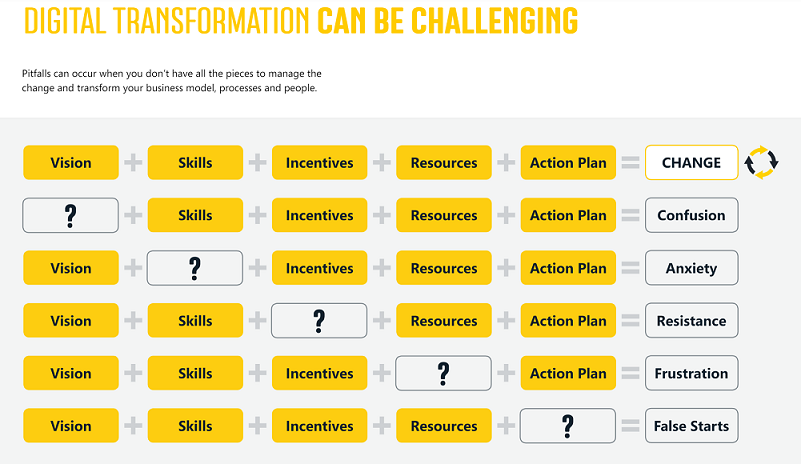
First Published: 06 March, 2019
Businesses can’t simply decide to transform one day, then jump straight into making change for change’s sake. It’s essential to plan the transformation carefully and understand the barriers and opportunities that could arise during the transformation journey.
Equally, some research suggests that businesses that take too much time to plan and don’t focus on their future business model will be twice as slow on their transformation journey than others that are more agile, open to trialling and testing tangible pieces.

Keeping the same old mindset will result in the same old results. Businesses may need to radically alter the prevailing mindset to move the needle. One of the most effective ways to do this is to seek an experimental mindset. This empowers people to hypothesise and test, gaining feedback on ideas early enough to understand whether they’ll work without expending wasted time or energy.
Along with the experimental mindset must come a culture in which it’s acceptable to take strategic risks. This means avoiding punishing failure but rewarding innovation and creativity, even if it doesn’t immediately yield perfect results. Businesses need to ensure that they’re receiving encouragement rather than push-back from every level of management. Often, frontline staff are best placed to help the business understand how to improve the customer experience, so it’s important to not just listen to them but to make sure they know their voices will be heard.
Transformation for its own sake is likely to be a waste of time and money. To get the entire organisation behind the initiative, it’s essential to give everyone visibility into why the transformation is important. While the CEO needs to drive the transformation and incentivise those who jump on board, it’s equally important to get mid-level managers on the train and empower them to make the changes that need to be made. To do this, they need to understand the why as well as the how.
If the transformation is seen as a pet project and not a mission-critical activity, key personnel won’t prioritise it. It can be easy for overworked or overwhelmed IT departments to say the systems aren’t capable of the kind of outcomes the business is looking for and that technology won’t provide the answer. However, when it’s made clear that this transformation is not a nice-to-have but the next critical step in the company’s evolution, IT teams may find it easier to reprioritise their workloads to find time for this.
For transformation to occur, by definition, the status quo must go. It’s important to look at the current business model and envisage the future model in order to really understand and overcome pain points and challenges and make the most of opportunities.
And, it’s not enough to make incremental changes. It’s important to completely flip everything about the customer experience on its head and look at it from fresh angles before deciding what to keep and what to change.
Measurement of new systems and processes should start from day one. Only by consistently and regularly measuring success can an organisation determine whether the transformation is really working.
To this end, businesses should also look for small, quick wins to create strong momentum for the transformation project. This includes choosing a platforms tool that can get the business there faster.
It’s important to get the right people in the right place at the right time. Managers need to understand whom to bring together to work towards which outcomes, then empower them to do what’s needed to get there.
It’s also essential to remember that a customer experience transformation initiative requires the same attention to change management as any large-scale technology implementation. Without getting staff members on board and using the new systems and processes, businesses will be unable to reap the rewards.
Download our whitepaper: Reimagining your customer experience – where to start in making your organisation’s experience transformation goals a reality.
Don’t get ready, get started. To reimagine your organisation’s customer experience, talk to us today.
#cxreimagine

Contact us if you have any suggestions on resources you would like to see more of, or if you have something you think would benefit our members.
Get in TouchSign up to receive updates on events, training and more from the MA.
